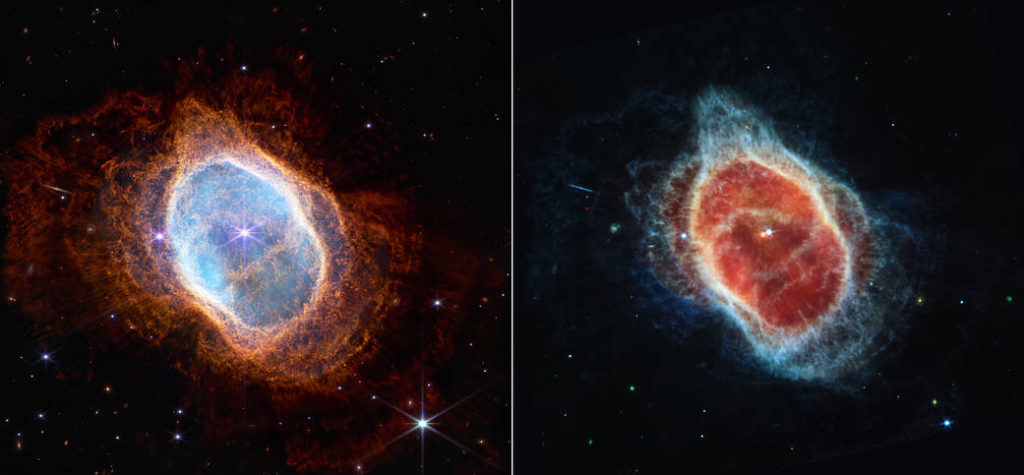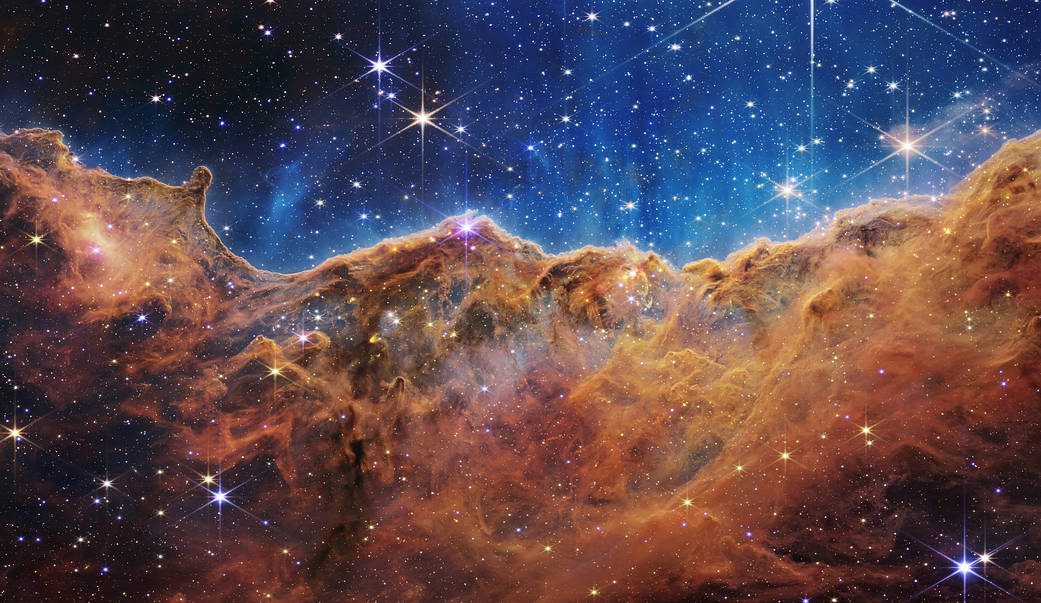A fresh set of photos taken by NASA’s new, potent space telescope and the photographs were worth the wait, and they will definitely redefine how we view the cosmos.
It’s now time for humanity to see the five magnificient photos obtained by the James Webb Space Telescope, the most potent space telescope ever. The construction of the largest space observatory in the world started in 2004, and on December 25 the telescope and its enormous gold mirror were finally launched.
Pictures taken by the James Webb Space Telescope:
1. The Carina Nebula
Around 7,600 light-years away, in the Carina nebula, a tumultuous cloud of gas and dust, some of the Milky Way’s hottest and most massive stars are born and die there. The fringe of a neighboring young star-forming area, also known as NGC 3324, can be seen in this amazing image. The biggest peak in this photograph, known as the “Cosmic Cliffs,” is a startling 7 light-years high, with blue ionized gas being steamed off of it by powerful radiation.
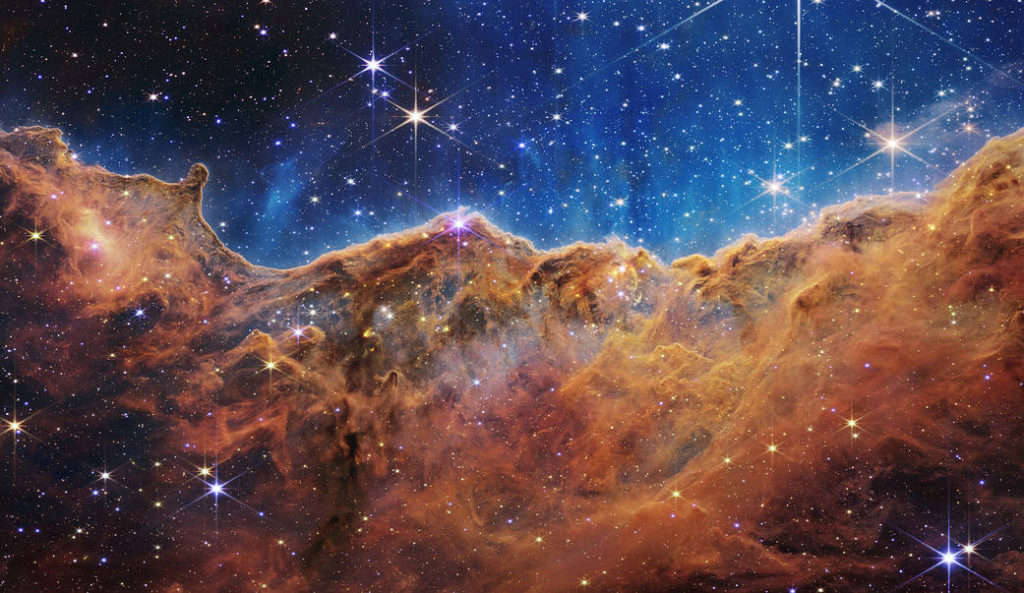
2. Stephan’s Quintet
A collection of galaxies known as Stephan’s Quintet is engaged in a cosmic dance in which stars collide and form. Although there are five galaxies visible, only four of them are actually close to one another. The galaxy on the left, NGC 7320, is 40 million light years distant from us, whilst the other galaxies are located at a distance of about 290 million light years. The NGC 7319 galaxy at the top of the photograph shows evidence of material whirling around a large black hole.
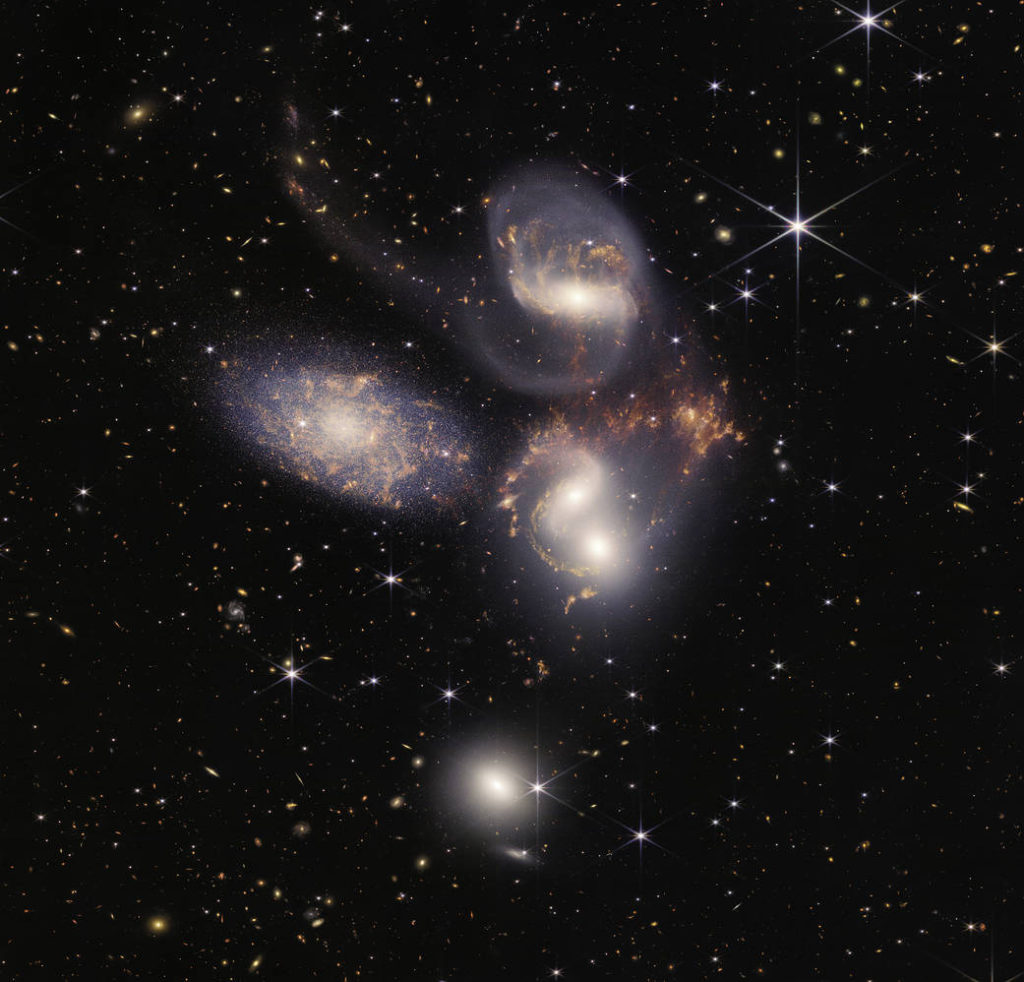
3. Exoplanet WASP-96b
Exoplanet WASP-96b, a hot, puffy globe with a 3.5 Earth-day orbit around its star, was one of JWST’s objectives. 1,150 light years away, it is whirling around a star that resembles the Sun. WASP-96b is significantly puffier than any of the gas giants in our Solar System due to its mass being less than half that of Jupiter and its diameter being 1.2 times larger.
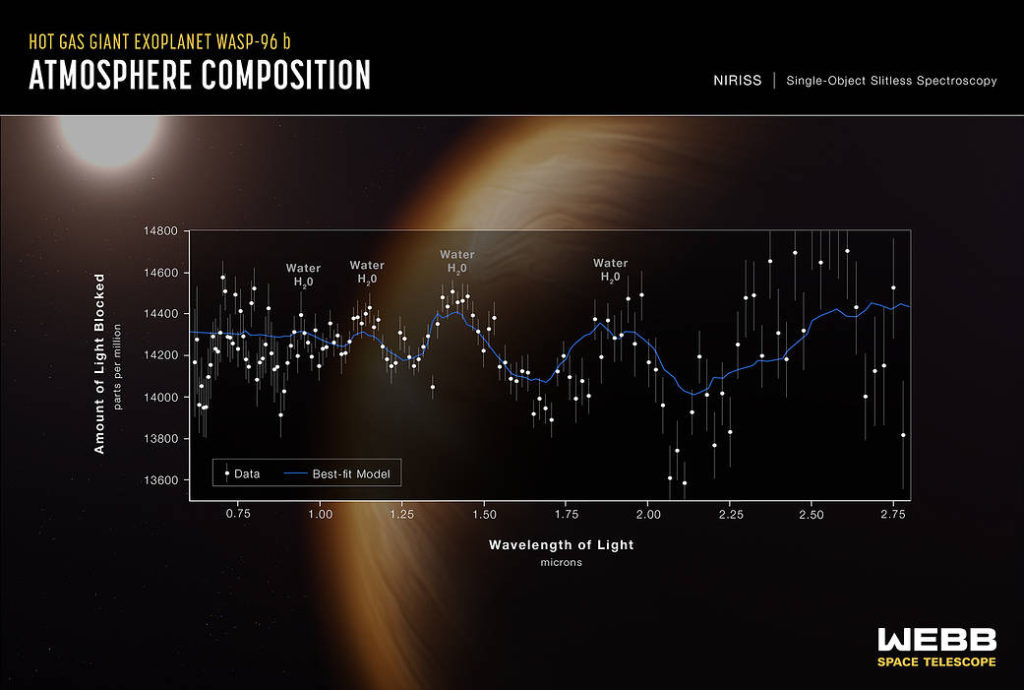
4. The Deep Field Image
The densely packed with galaxies that have been locked in space-time for billions of years deep field view of SMACS 0723.
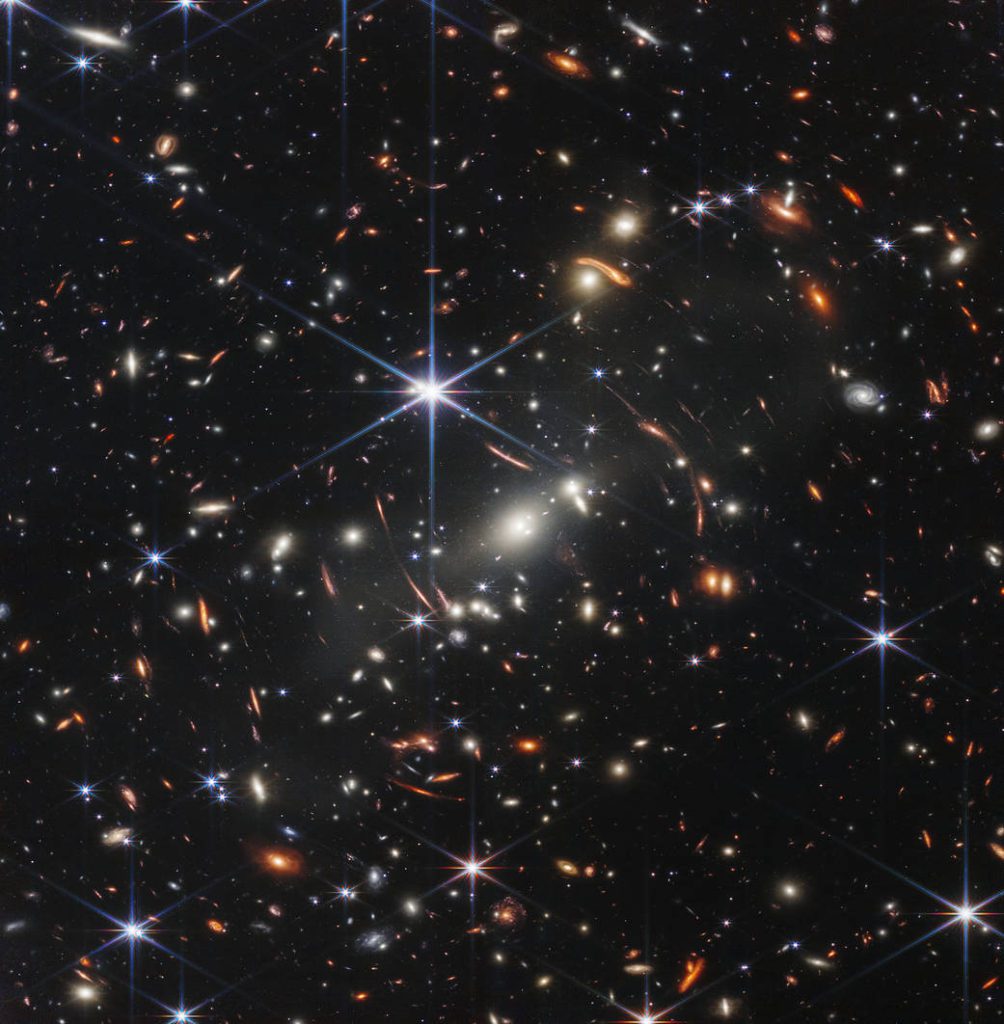
The Southern Ring Nebula, also known as NGC 3132, is a stunning luminous glob in the southern region of Vela that is around 2,000 light-years away.
